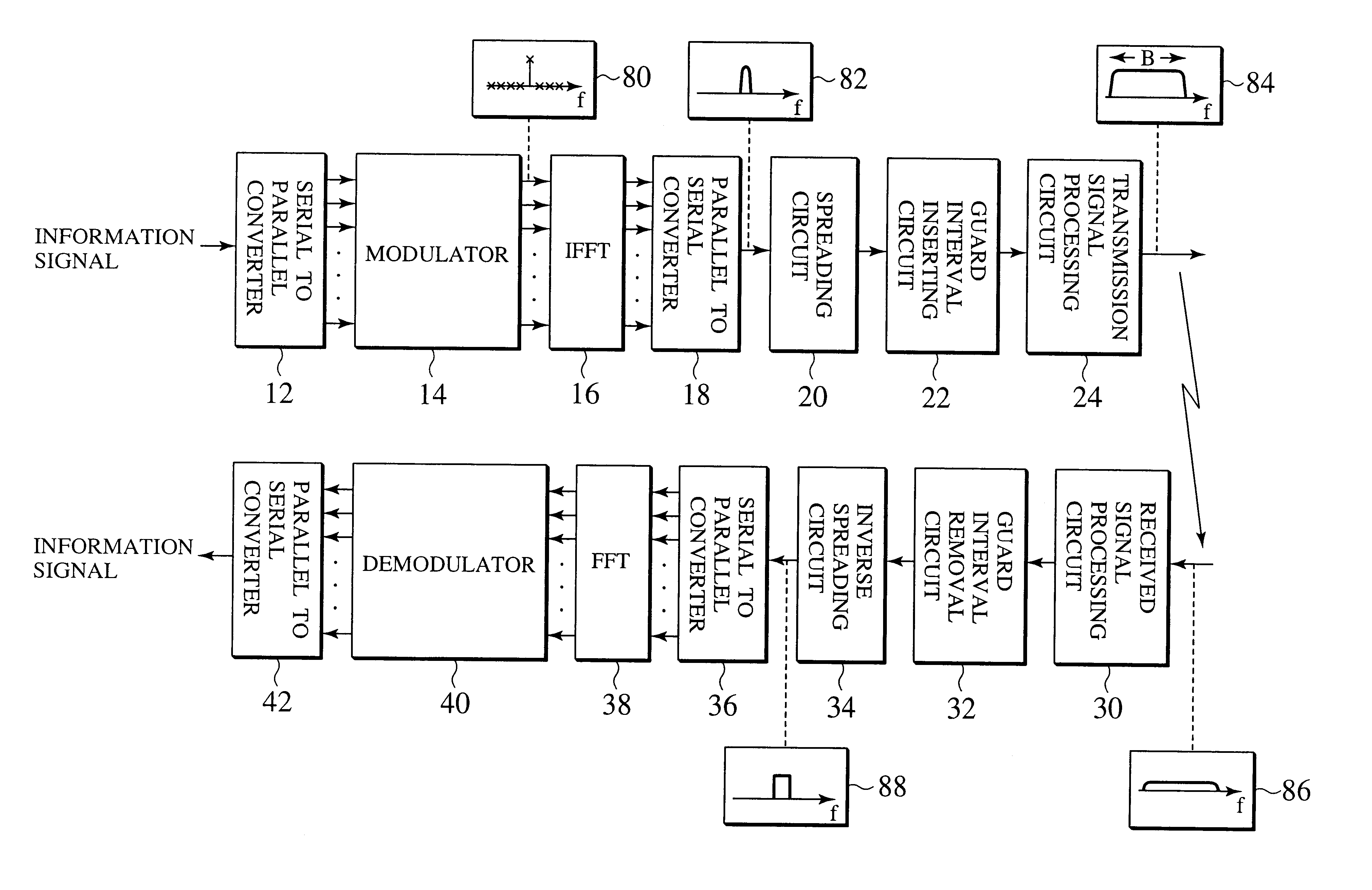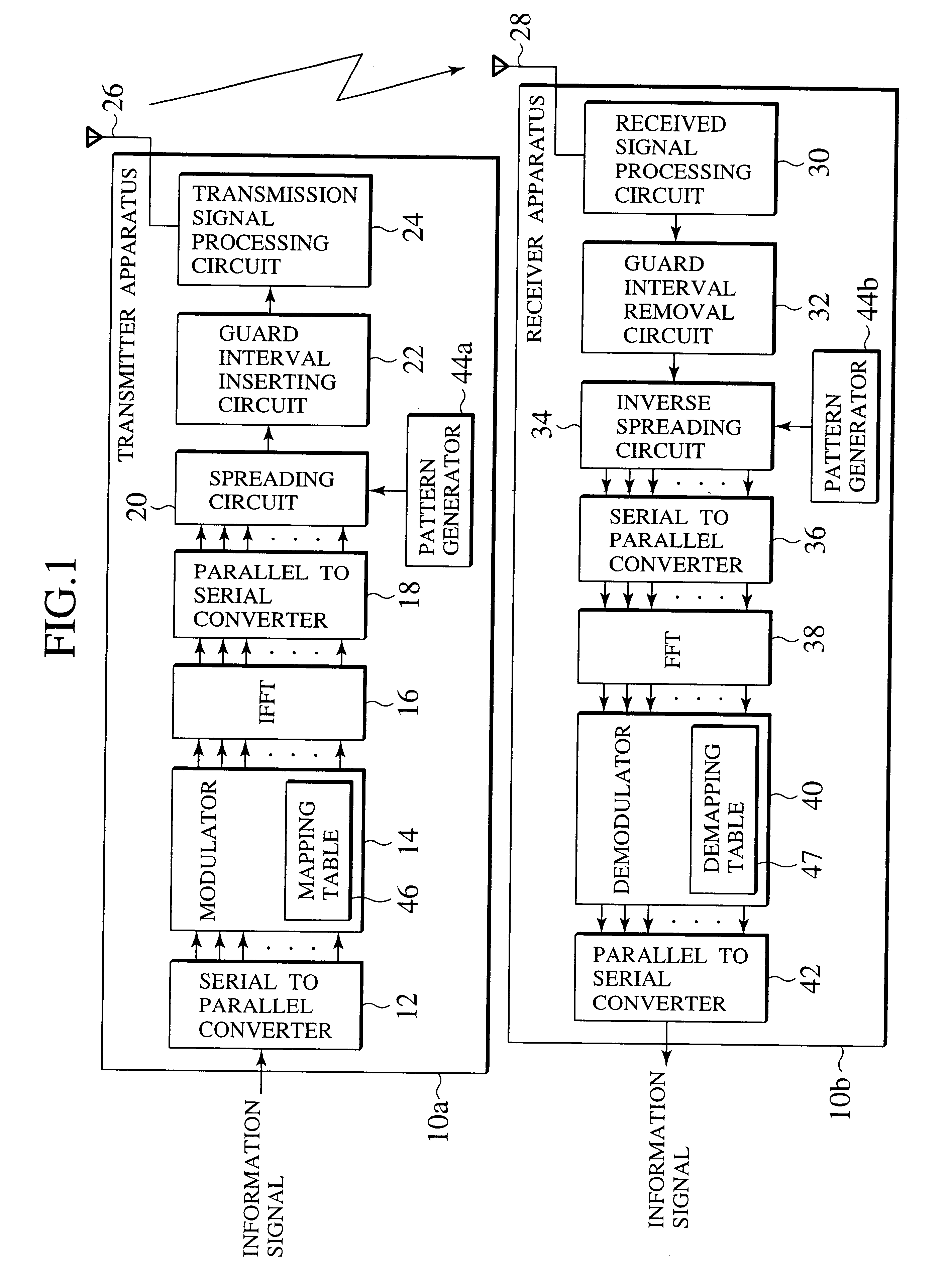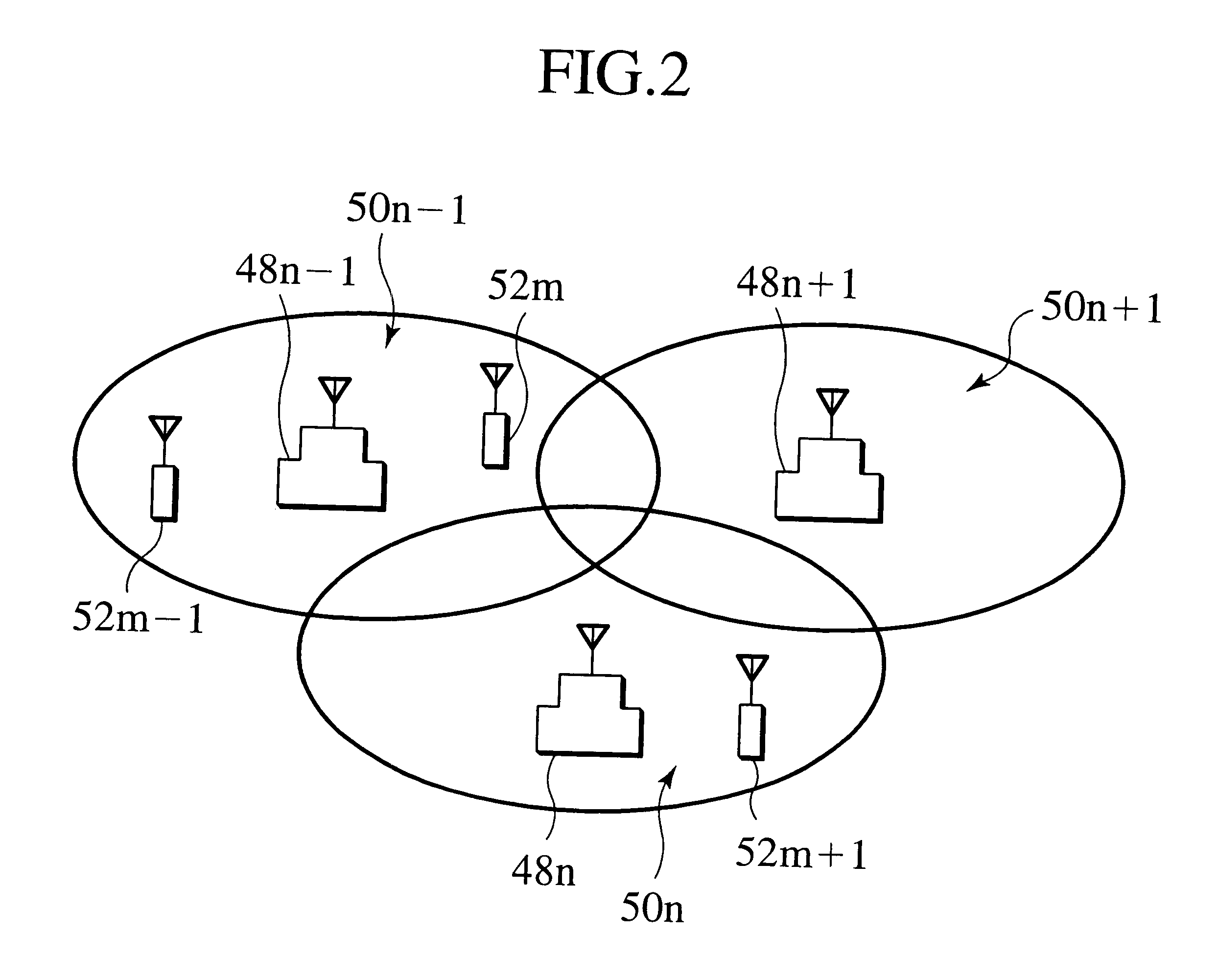Transmitter apparatus and receiver apparatus and base station making use of orthogonal frequency division multiplexing and spectrum spreading
a technology of orthogonal frequency division and receiver apparatus, applied in the field of transmitter apparatus, receiver apparatus and base station, can solve the problems of increasing interference with adjacent cells, unable to continue communication, and how to arrange cells in the dynamic zone structure, so as to expand the variable range of cell coverage
- Summary
- Abstract
- Description
- Claims
- Application Information
AI Technical Summary
Benefits of technology
Problems solved by technology
Method used
Image
Examples
first embodiment
(First Embodiment)
[0060]FIG. 1 is a block diagram showing a transmitter apparatus and a receiver apparatus in accordance with a first embodiment of the present invention. The transmitter apparatus and the receiver apparatus in accordance with the present invention are provided for wireless communication by the use of OFDM (Orthogonal Frequency Division Multiplexing).
[0061]As illustrated in FIG. 1, the transmitter apparatus 10a in accordance with the first embodiment of the present invention is composed of a serial-to-parallel converter 12 for converting the information signals (data stream) to be transmitted from a serial data sequence to a parallel data sequence, a modulator 14 for mapping the parallel data as outputted from the serial-to-parallel converter 12 onto symbols in the frequency domain, an IFFT (Inverse Fast Fourier Transform) unit 16 for converting the signals in the frequency domain as outputted from the modulator 14 to the signals in the time domain, a parallel-to-ser...
second embodiment
(Second Embodiment)
[0077]FIG. 7 is a block diagram showing a transmitter apparatus and a receiver apparatus in accordance with a second embodiment of the present invention. The transmitter apparatus and the receiver apparatus in accordance with the present invention are provided for wireless communication by the use of the OFDM technique in the same manner as the first embodiment. In the case of the first embodiment of the present invention, the OFDM modulation and the spectrum spreading process are not performed to the same signals in combination. However, in the case of the present embodiment, the OFDM modulation and the spectrum spreading process are performed to the same signals.
[0078]Also, the first embodiment of the present invention, the signals in the frequency domain are spectrum spread or inverse spectrum spread. Accordingly, the spectrum spreading circuit 20 as illustrated in FIG. 1 is connected between the parallel-to-serial converter 18 and the guard interval inserting ...
third embodiment
(Third Embodiment)
[0088]Next, a third embodiment of the present invention will be explained. The next generations of the wireless communication system are expected to support high speed signal transmission rates in the order of several Mbps to several tens of Mbps with a wider bandwidth exclusively occupied by each channel. Because of the limitation on the frequency resources as available, it is particularly important how to determine an effective arrangement of the respective cells in the cellular system.
[0089]FIG. 10 is a schematic diagram showing an example of the conventional cell arrangement in the case where only one frequency is available. As illustrated in FIG. 10, it is impossible to provide overlap between adjacent ones of the cells 92n−1, 92n and 92n+1 of base stations 90n−1, 90n and 90n+1. Accordingly, when the mobile station 94a in the cell 92n−1 is transiting to the position 94c through the position 94b, the communication between the mobile station 94a and either the b...
PUM
 Login to View More
Login to View More Abstract
Description
Claims
Application Information
 Login to View More
Login to View More - R&D
- Intellectual Property
- Life Sciences
- Materials
- Tech Scout
- Unparalleled Data Quality
- Higher Quality Content
- 60% Fewer Hallucinations
Browse by: Latest US Patents, China's latest patents, Technical Efficacy Thesaurus, Application Domain, Technology Topic, Popular Technical Reports.
© 2025 PatSnap. All rights reserved.Legal|Privacy policy|Modern Slavery Act Transparency Statement|Sitemap|About US| Contact US: help@patsnap.com



